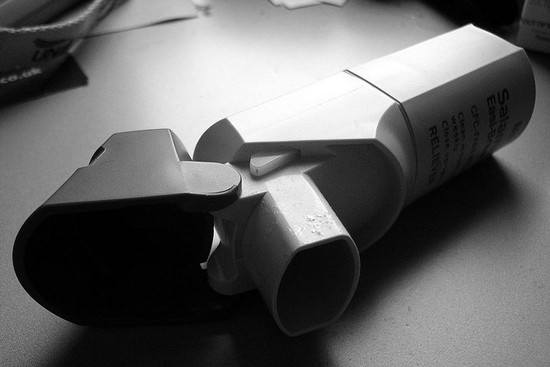Children covered by Medicaid and equally sick children not covered by Medicaid received essentially similar asthma treatment in a given pediatric hospital, according to a new study. In a national sample, researchers analyzed hospital practice patterns by comparing inpatient costs, lengths of stay and use of the intensive care unit (ICU).
“Because Medicaid payments to providers may be considerably lower than reimbursements from private medical insurance, we asked whether the care of Medicaid patients differed from the care of non-Medicaid patients within the same hospital,” said study leader Jeffrey H. Silber, M.D., Ph.D., director of the Center for Outcomes Research at The Children’s Hospital of Philadelphia (CHOP). “From a policy perspective, the answer is reassuring–Medicaid and non-Medicaid patients received comparable treatment.”
Silber and colleagues from CHOP and the Perelman School of Medicine at the University of Pennsylvania co-authored the study appearing today in Pediatrics.
The research team studied more than 17,000 pairs of pediatric asthma inpatients, matched for age, sex and asthma severity, from 40 major U.S. children’s hospitals in the Pediatric Health Information dataset. All the children were admitted for acute asthma during 2011 to 2014.
The authors chose asthma, because it’s the most prevalent chronic illness among children, and is a leading cause of hospitalization among U.S. children aged one to 15 years.
Unlike many previous studies, Silber said, using matched pairs of patients helped ensure that patient populations had similar clinical presentations, such as severity of illness. The authors write in the paper, “This is very different from asking whether Medicaid patients are more expensive because they are sicker.” Silber added, “This matching methodology allowed us to better compare patient resource usage within hospitals,” he said.
The median patient cost was $4263 for Medicaid patients versus $4160 for non-Medicaid patients, very similar results. The median length of stay was one day for both groups, and ICU use was also comparable: 7.1 percent of Medicaid patients used the ICU, as did 6.7 percent of non-Medicaid patients.
In addition, there was only slight variation across hospitals. Only two of the 40 hospital stood out for especially large differences between the two groups of patients. One hospital had higher costs for Medicaid patients, which the other showed the opposite pattern–higher costs for non-Medicaid patients.
Silber concluded that “Ongoing monitoring for disparities in treatment is a fundamental responsibility of any insurance system, but must be done with great care.” He added, “We have demonstrated that multivariate matching is ideally suited to ensure fairness when comparing groups of children, allowing for more meaningful audits, and for potentially actionable results should differential care be observed. For asthma, we are glad to report that we did not find meaningful differences in treatment style between Medicaid and non-Medicaid children hospitalized for asthma inside children’s hospitals.”
The Agency for Healthcare Research and Quality (grant HS020508) and the National Science Foundation (grant SES-1260782) supported this research. Co-authors with Silber were Paul R. Rosenbaum, Ph.D.; Wei Wang, Ph.D.; Shawna Calhoun, MPH; James P. Guevara, M.D., MPH; Joseph J. Zorc, M.D., MSCE; and Orit Even-Shoshan, M.S.
Jeffrey H. Silber et al, “Practice Patterns in Medicaid and Non-Medicaid Asthma Admissions,” Pediatrics, published July 6, 2016. http://doi.org/10.1542/peds.2016-0371
About The Children’s Hospital of Philadelphia: The Children’s Hospital of Philadelphia was founded in 1855 as the nation’s first pediatric hospital. Through its long-standing commitment to providing exceptional patient care, training new generations of pediatric healthcare professionals, and pioneering major research initiatives, Children’s Hospital has fostered many discoveries that have benefited children worldwide. Its pediatric research program is among the largest in the country. In addition, its unique family-centered care and public service programs have brought the 535-bed hospital recognition as a leading advocate for children and adolescents. For more information, visit http://www.chop.edu
If our reporting has informed or inspired you, please consider making a donation. Every contribution, no matter the size, empowers us to continue delivering accurate, engaging, and trustworthy science and medical news. Independent journalism requires time, effort, and resources—your support ensures we can keep uncovering the stories that matter most to you.
Join us in making knowledge accessible and impactful. Thank you for standing with us!

